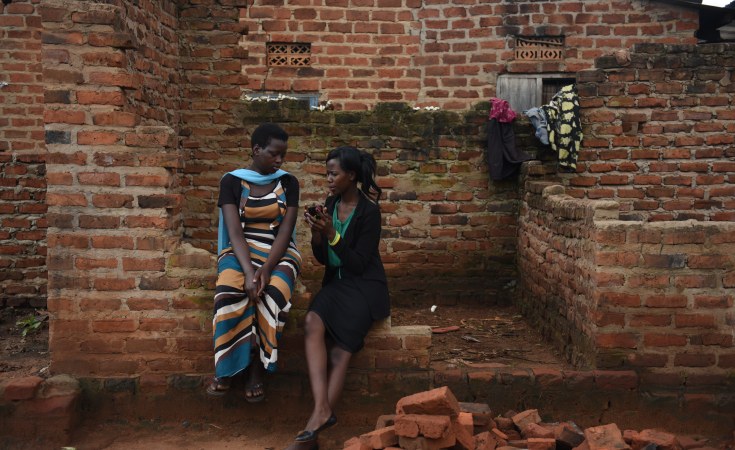Youth programs have the potential to transform an individual’s life. But those who manage to access these programs are the lucky ones, says Invisible Lives: Understanding Youth Livelihoods in Ghana and Uganda, new research supported by The MasterCard Foundation. The positive benefits associated with a training intervention can be transformative for a young person, yet the numbers reached through these interventions remain small.
Ensuring that youth are able to find meaningful employment after they leave school is a challenge faced by countries around the world. This is particularly true in Sub-Saharan Africa where over seventy percent of youth are in vulnerable employment without a secure income. This challenge is greatest due to the structure of the economies, the low levels of job growth and the large youth population.
This large cohort of young people is innovative, entrepreneurial, and creative in finding ways to make a living. But they are also often invisible to government and international skills development and entrepreneurship programs. This is particularly true of the most vulnerable youth in rural areas.
These challenges, and the resourceful ways that young people are dealing with them, are highlighted in new research from The MasterCard Foundation. Invisible Lives, which was conducted by youth researchers, examined the economic activities of over 200 young people (aged 18-24) in rural areas of Ghana and Uganda and how they ebbed and flowed over the course of the year. It found that young people in both countries faced considerable difficulties in finding consistent ways to earn income, particularly a steady wage income.
The young people who participated in the research nearly all took a “mixed livelihoods” approach to generating income, mixing small-scale enterprise and agricultural activities in order to earn enough money. This approach was a way to mitigate financial risks. Each small-scale enterprise could be started or stopped when needed, depending on agricultural cycles or household activities such as cooking, cleaning, and looking after children.
Most of the research participants were farmers and agriculture was central to their livelihoods. However, income from agricultural production alone was insufficient to sustain these young people and their families for the year. They faced a number of challenges to increasing their agricultural incomes including lack of land, capital, and modern farming techniques.
The research also revealed that young people in both countries faced considerable difficulties in finding consistent ways to earn money. Both formal and informal wage employment was rare and sporadic, or elusive. There was a shortage of formal employment opportunities and while the informal sector provided more wage employment opportunities for young people, they were by no means abundant.
The limited reach of expanding education and training systems was also notable. Of the Invisible Lives research participants, two-thirds had five years of schooling or less. And while all were either poor or very poor according to the Progress out of Poverty Index, none of the youth in this study had access to training or formalized financial services to help them save for the future or grow their businesses. The reality remains that the vast majority of youth have no access to the tools, skills, and training they need to successfully transition to a better life.
Research conducted by UNCDF and others in partnership with The MasterCard Foundation has indicated that this is not an isolated issue for Ghana and Uganda, but a pattern among young people across sexes, countries, and regions across Africa.
Understanding young people’s daily lives is key to designing realistic, timely, and effective programs that lead to sustainable livelihoods for young people.
To address the need for these programs, governments and development organizations should look to scale these interventions and ensure that they are reaching rural areas. They should also ensure that there is an effective environment for the private sector to grow, thereby providing more and better employment opportunities for the millions of invisible youth across the continent.
About the Author
Lindsay Wallace leads the Learning and Strategy team at The MasterCard Foundation. Prior to this role, she served as Deputy Director, Financial Inclusion. Before joining the Foundation, she was a Senior Economist and Team Lead of the Economic Growth Unit at the UK Government’s Department for International Development in Rwanda, where she was responsible for a variety of programming that strengthened the financial sector, trade links, agriculture and overall economic development.


